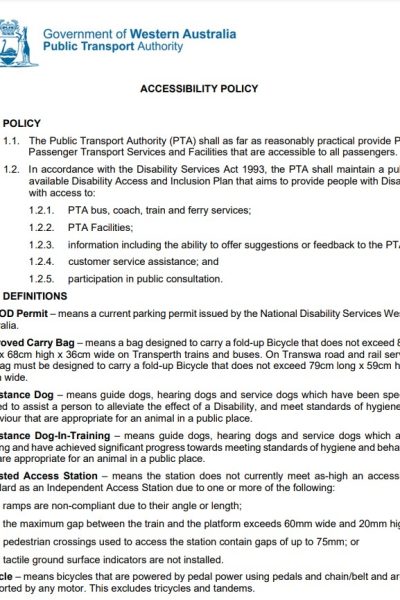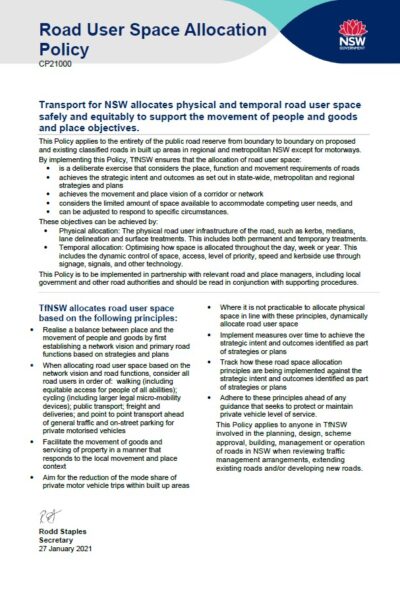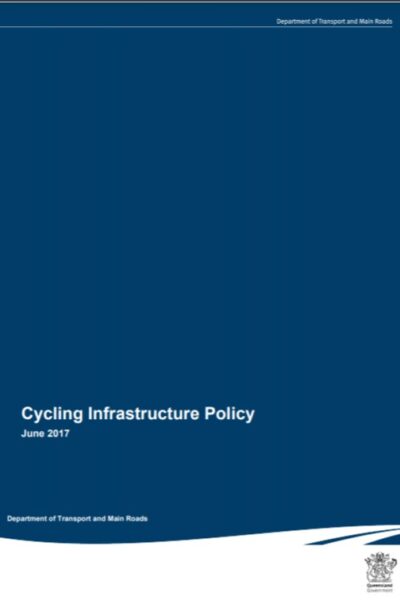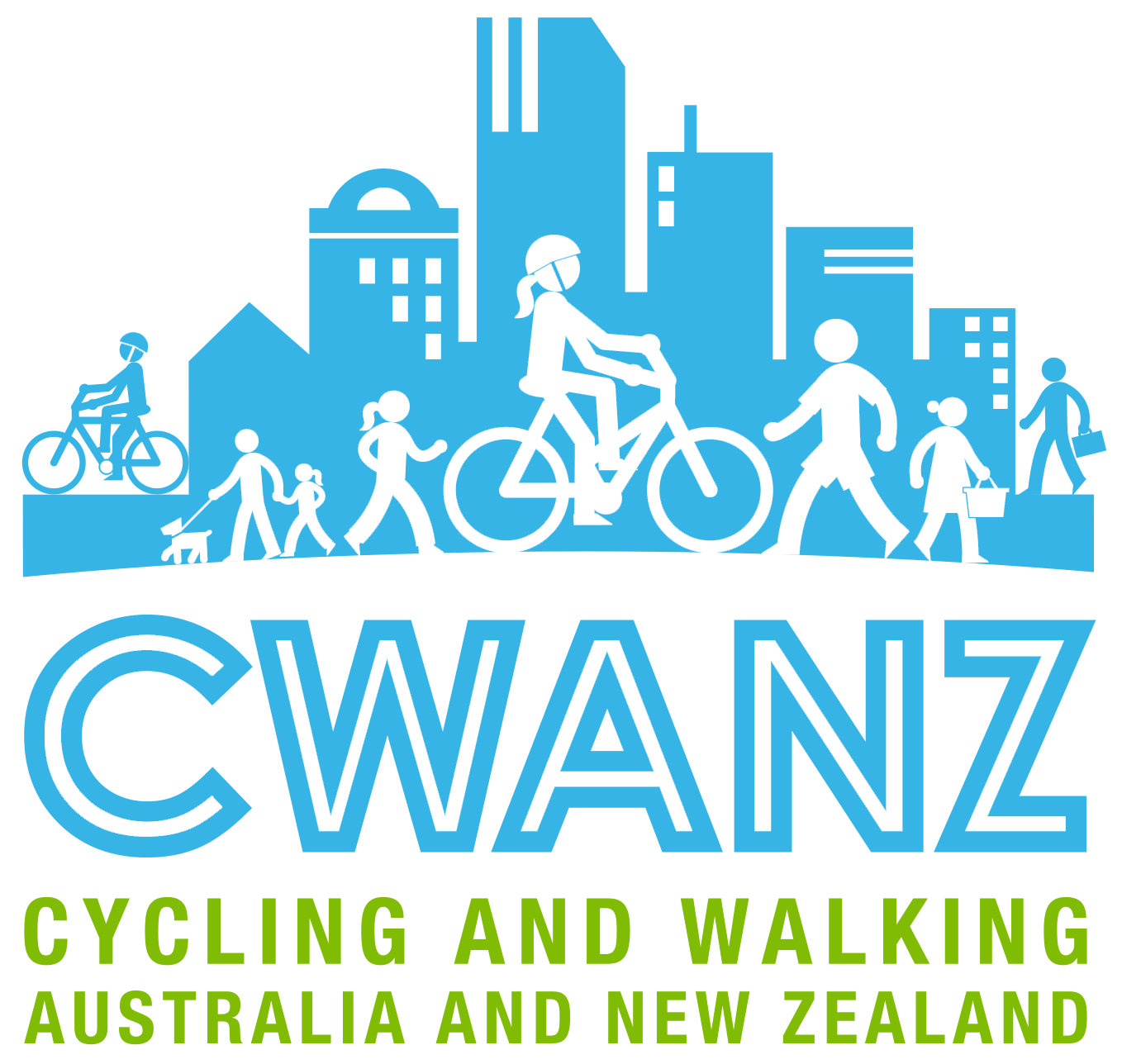Resources
This page contains some key resources on walking and cycling, including an archive of the documents produced by the Australian Bicycle Council.
| Date Added | |||
|---|---|---|---|
 |
Accessibility Policy Public Transport Authority Western Australia The PTA Accessibility Policy has been developed as the overarching document for access. Our Accessibility Policy outlines how the PTA shall, as far as reasonably practical, provide public passenger transport services and facilities that are accessible to all passengers. |
19/05/2023 | View |
 |
Providing for Walking and Cycling in Transport Projects Policy Transport for NSW Transport for NSW allocates physical and temporal road user space safely and equitably to support the movement of people and goods and place objectives |
07/04/2022 | View |
 |
New Paths on New Projects Department of Transport, Victoria Every major new transport project – from North East Link to the West Gate Tunnel – now includes new or upgraded infrastructure for cyclists and pedestrians. |
16/07/2021 | View |
 |
Cycling Infrastructure Policy (Queensland) Department of Transport and Main Roads, Queensland The Cycling Infrastructure Policy is an important mechanism to deliver the Queensland Government’s vision for more cycling, more often and Transport and Main Roads’ vision of a single integrated transport system accessible to everyone. |
07/07/2021 | View |
